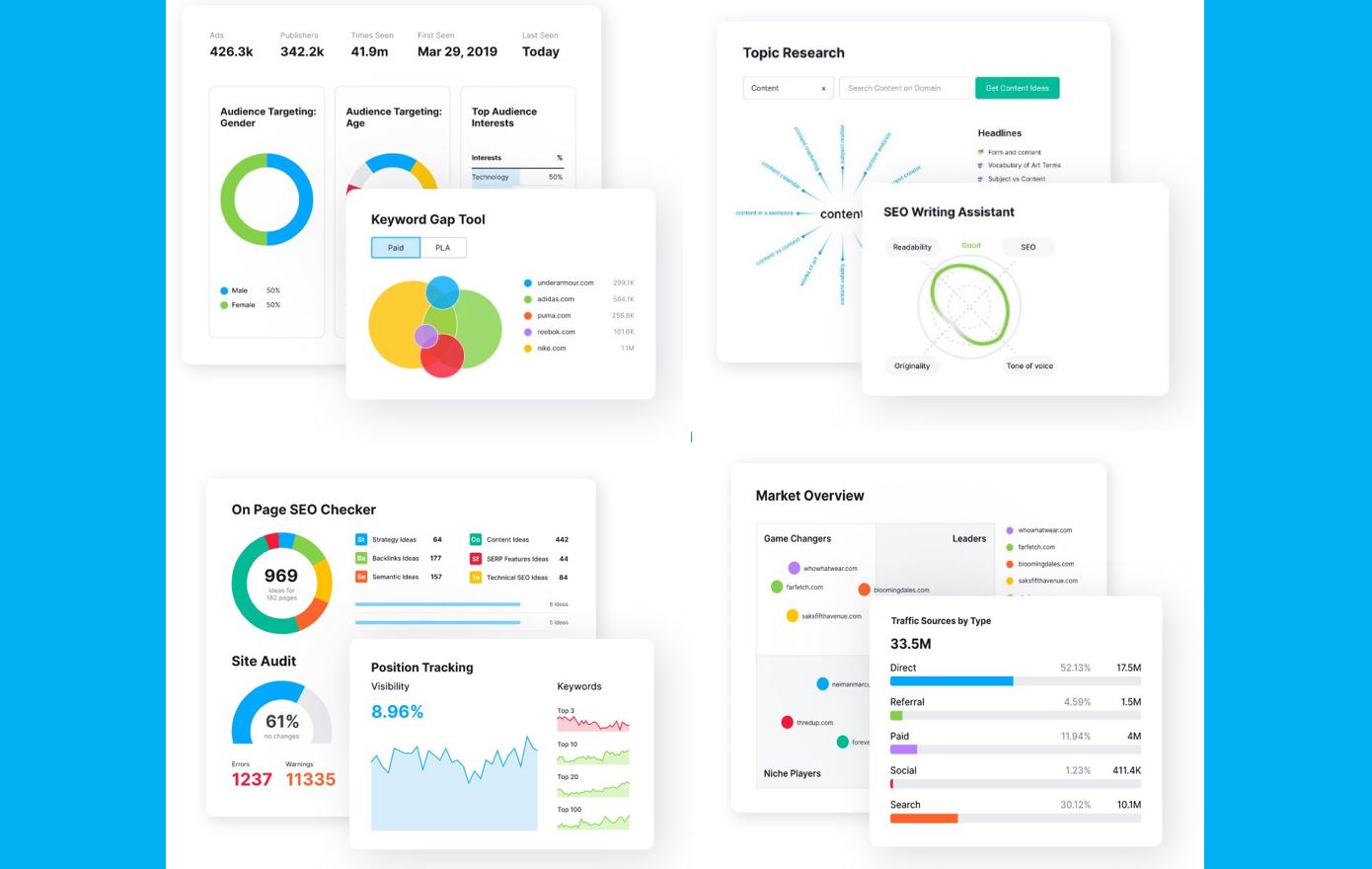10 Elements of a Prosperous Content Strategy
Unlocking the Keys to Content Marketing Success: 10 Essential Elements of an Effective Strategy: Are you looking for the secret ingredients to create an effective content marketing strategy? If so, you’re on the right track and we can help. Content marketing is one of the most powerful tools available to businesses today – from small start-ups to Fortune 500 companies – in order to reach and engage their target audiences. The formula may not be obvious, but with a few key elements and implementation tactics, content marketing success is within your reach! In this blog post, we’ll explore 10 essential elements that are necessary for any comprehensive content strategy. From establishing objectives to measuring results, this guide will equip you with all of the information needed to move forward confidently with your own successful content initiatives.
Establish clear objectives for your content marketing efforts.
A content strategy is a plan of action for creating and delivering content that meets the needs of your business and its customers. It includes a definition of your target audience, the content you will create, how you will distribute it, and how you will measure success.
Your content strategy should be tailored to your specific business and audience. It should answer the following questions:
- Who is your target audience?
- What content do they need?
- What format will work best for them?
- How will you distribute your content?
- How will you measure success?
Identify your target audience and understand their needs and preferences.
In order to understand how content marketing and content strategy are different, it’s important to first understand what each term means. Content marketing is the process of creating and distributing valuable content to attract and retain a target audience. Content strategy, on the other hand, is the process of planning and executing a content marketing program. It’s important to note that content marketing and content strategy are not the same thing – one is a tactic and one is a strategy.
Content marketing is all about creating valuable content that will interest your target audience. You might create blog posts, videos, infographics, or e-books to help educate your audience about your product or service. The goal of content marketing is to create engaging content that will keep people coming back for more.
Content strategy, on the other hand, is all about planning and organizing your content so that it achieves your business goals. Your content strategy should include a plan for creating and distributing content, as well as a plan for measuring its success. You’ll also need to determine who your target audience is and what their needs and preferences are. Once you have this information, you can create content that appeals to them specifically.
So, how are content marketing and content strategy different? Content marketing is all about creating valuable content that will interest your target audience. Content strategy, on the other hand, is all about planning and organizing your content so that it achieves your business goals.
Create valuable and engaging content that resonates with your audience.
Content strategy is the process of planning and creating content that meets the needs of your audience. It involves understanding your audience, what they want to know, and what type of content will resonate with them. Content strategy also includes developing a plan for creating and delivering that content, as well as measuring its effectiveness.
Why is content strategy important? Because if you don’t plan and create content that meets the needs of your audience, they will go elsewhere. They will find other sources of information that are more relevant to them and meet their needs better. And you don’t want that to happen.
Your audience is key to your success online. If you can create content that resonates with them, they will keep coming back for more. They will share your content with their friends and followers, and you will benefit from increased exposure and greater engagement. But if you fail to create valuable content that meets the needs of your audience, they will move on, and you will lose out.
So how do you go about creating content that meets the needs of your audience? It’s not easy, but it can be done. Here are some tips:
- Know your audience. This is arguably the most important part of content strategy. You need to understand who your audience is, what they want to know, and what type of content will resonate with them. You can’t just guess or assume you know what they want – you need to do your research!
- Plan ahead. Once you know who your audience is and what they want to know, develop a plan for creating and delivering content that meets their needs. This plan should include a editorial calendar with topics and themes, as well as a distribution strategy.
- Create engaging content. Content doesn’t have to be boring or dry – in fact, it should be the opposite! You need to create engaging content that people will want to read and share. This takes time and effort, but it’s worth it in the end.
- Measure results. Once you’ve launched your content strategy, track the results to see how well it’s performing. Use analytics tools to measure engagement levels, social media shares, website traffic, etc. This feedback will help you tweak your strategy as needed and make sure you’re getting the most out of your investment in content marketing
Optimize your content for search engines and distribute it across appropriate channels.
If you want to be a great SEO content writer, you need to understand how to write for both people and search engines. You also need to know how to distribute your content across the right channels.
To write great content that will rank well in search engines, you need to include the right keywords and phrases. You also need to make sure your content is fresh and relevant, and that it provides value to your readers.
You can promote your content by sharing it on social media, submitting it to article directories, and guest blogging on popular blogs. You can also use SEO techniques like keyword stuffing and backlinking to improve your ranking in search engine results pages.
Track and analyze the results of your content marketing campaigns to optimize performance.
You also need a relevant keyword, but also one with good data scoring low in competition so you actually have a spot in the rankings. Finding that perfect keyword can be tough, but luckily there are a few tools to help make the process a little easier.
One such tool is the Google AdWords Keyword Planner. This tool allows you to see how often a particular keyword is being searched for on Google, as well as how competitive the market is for that keyword. This information can be helpful when deciding which keywords to target for your content marketing campaigns.
Another great tool for finding keywords is the Google Trends tool. This tool lets you see how popular a particular keyword is over time. This can be helpful in determining whether a keyword is on the rise or in decline.
Once you’ve chosen a few potential keywords to target, it’s important to do some research on each one to determine whether it’s a good fit for your business. You’ll want to consider factors such as the average monthly search volume and the level of competition for that keyword. You’ll also want to make sure the keyword is relevant to your business and your target audience.
Once you’ve selected a few target keywords, it’s time to start creating content around them. You can use these keywords throughout your content, including in the title, in the body, and in the keywords section of your website. You can also use them in your social media posts and in your advertising campaigns.
By targeting relevant keywords and creating high-quality content around them, you can improve your chances of ranking high in Google search results and attracting more visitors to your website.
Continuously improve and update your content strategy to keep up with the latest trends and changes in the market.
Links are an important part of SEO, and there are a few things you can do to optimize them:
- Internal Links
When you create a new piece of content, include links to other related pages on your site. This will help Google understand the topic of your article, and it will also help viewers find more information on the same topic.
- External Links
When you include a link to another website, make sure it’s a high-quality website that is relevant to your audience. External links can help improve your SEO ranking, but only if they are quality links from reputable websites.
- Anchor Text
Anchor text is the text you use to identify a link. When you add a link to your content, be sure to use anchor text that accurately describes the destination page. This will help Google understand the topic of the link.
Collaborate with other departments within your company to ensure a coordinated, cohesive approach to content marketing.
What is Google E-A-T?
Google E-A-T stands for “Expertise, Authoritativeness, and Trustworthiness”. It’s a term that was coined by Google to help explain the factors that go into their search engine ranking algorithm.
Why is it important?
Google has always been focused on providing the best possible user experience to their customers. That means delivering the most relevant, trustworthy search results. Google E-A-T is one of the ways they measure how trustworthy a website is.
What can you do to improve your Google E-A-T?
There are a few things you can do to improve your Google E-A-T:
- Make sure your website is filled with high quality, relevant content.
- Make sure all of your information is up to date and accurate.
- Establish yourself as an expert in your field.
- Gain trust from your customers and followers.
- Avoid any shady marketing tactics or black hat SEO techniques.
Use storytelling techniques to engage readers and create a memorable experience.
Content strategy is the practice of planning, creating, managing, and optimizing content. This includes the creation of content goals, the development of a content plan, and the use of metrics to measure content marketing success. Content strategy sets the foundation for effective content marketing.
One of the most important aspects of content strategy is setting metrics to measure content marketing success. Without metrics, it is difficult to determine whether or not your content marketing efforts are achieving your desired results. There are many different metrics that can be used to measure content marketing success, but some of the most common include website traffic, leads generated, conversion rates, and social media engagement.
Website traffic is one of the most common metrics used to measure content marketing success. The number of visitors to your website can be a good indicator of how well your content is performing. If you see an increase in website traffic, it may mean that your content is resonating with your audience and they are finding it useful.
Leads generated is another common metric used to measure content marketing success. Lead generation refers to the process of turning website visitors into potential customers. You can track how many leads your content generates by using lead capture forms or tracking codes on your website. If you see an increase in leads generated, it may mean that your content is helping you attract new customers.
Conversion rates are another common metric used to measure content marketing success. Conversion rates refer to the percentage of website visitors who take a desired action, such as signing up for a newsletter or making a purchase. If you see an increase in conversion rates, it may mean that your content is motivating people to take action.
Social media engagement is another common metric used to measure content marketing success. Engagement refers to how much interaction your content receives on social media platforms such as Facebook, Twitter, and LinkedIn. If you see an increase in social media engagement, it may mean that your audience is responding well to your content and finding it valuable.
Leverage social media platforms to share your content and reach a larger audience.
Your blog post should explain how content must be tied to leads and business metrics in order to be effective. You should also provide examples of how this can be done.
Content is one of the most important aspects of any marketing strategy. However, it’s not enough to simply create content for the sake of creating content. Content must be tied to leads and business metrics in order to be effective.
One way to do this is by using social media platforms to share your content. This will help you reach a larger audience and generate more leads. You can also use social media to track how well your content is performing. This will help you determine which content is resonating with your audience and which ones need improvement.
In addition, you can use website analytics to track how your website traffic is being generated. This will help you identify which marketing channels are working best for you and which ones need more attention.
By tying content to leads and business metrics, you can ensure that your marketing efforts are being effective and contributing to the success of your business.
Promote your content through paid advertising for even greater impact.
In order for content to really make a difference in your business, you need to promote it using other channels than just search engines. Paid advertising is a great way to do that, because you can target specific demographics and interests who are likely to be interested in what you have to say. Additionally, social media platforms like Facebook and Twitter offer great opportunities to reach a wider audience with your content. By promoting your content in these ways, you’ll see a significant increase in traffic and engagement, which will result in more leads and sales.
In Short the 10 Essential Elements of Content Strategy Are:
- Establish clear objectives for your content marketing efforts.
- Identify your target audience and understand their needs and preferences.
- Create valuable and engaging content that resonates with your audience.
- Optimize your content for search engines and distribute it across appropriate channels.
- Track and analyze the results of your content marketing campaigns to optimize performance.
- Continuously improve and update your content strategy to keep up with the latest trends and changes in the market.
- Collaborate with other departments within your company to ensure a coordinated, cohesive approach to content marketing.
- Use storytelling techniques to engage readers and create a memorable experience.
- Leverage social media platforms to share your content and reach a larger audience.
- Promote your content through paid advertising for even greater impact.
Content marketing is a strategic approach that involves creating and distributing valuable, relevant, and engaging content to attract and retain a clearly-defined audience — with the ultimate goal of driving profitable customer action. If you want to get started with content marketing, keep these tips in mind.




